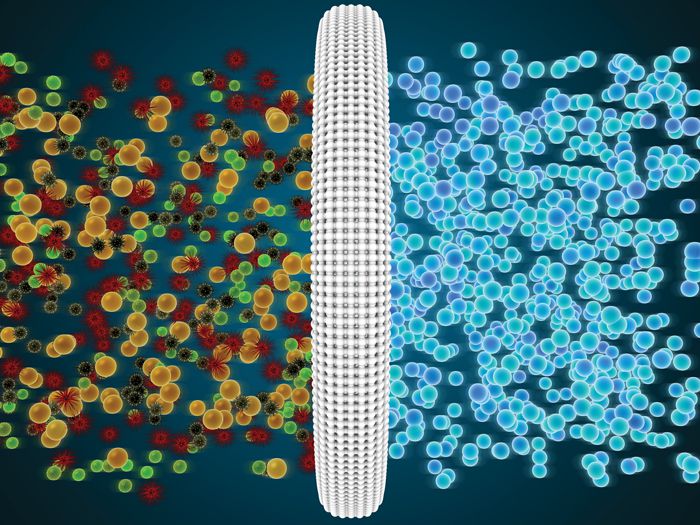Membrane Technology Might Save the World
Published on by Water Network Research, Official research team of The Water Network in Technology
Turns out membrane technology can help solve the world’s power problem, therefore innovation in this field is crucial.
These are innovations that will reduce costs and help us deliver essential services to underdeveloped populations, as well as the developed world, where infrastructure demands are heavy, too.
 For the first time, the Sorek desalination plant, near Tel Aviv, is using 16-inch seawater reverse osmosis membranes in a vertical arrangement.
For the first time, the Sorek desalination plant, near Tel Aviv, is using 16-inch seawater reverse osmosis membranes in a vertical arrangement.
This innovation in design – the intellectual property of IDE Technologies, which is co-owned by Israel Chemicals Ltd. and Delek Group Ltd. – has resulted in a reduced footprint and lower capital expenditure on the front end and lower energy consumption and substantial cost savings on the back end.
Another key step was the use of a chemical-free system using porous lava stone to capture microorganisms that would otherwise clog the membranes.
Earlier in development are advanced membranes made of atom-thick sheets of carbon, which hold the promise of further cutting the energy needs of desalination plants.
Turns out membrane technology can also help solve the world’s power problem, too.
In a recent study published in the journal Nature , researchers from the United States and Switzerland describe what may be the most powerful osmotic power generator in the world.
Osmotic power – or “blue energy” – is the energy derived from the difference in salinity between seawater and fresh water, which is harnessed to generate electricity.
When freshwater is separated from seawater by a semipermeable membrane, the freshwater moves, by osmosis, through the membrane into the seawater.
For the new study, scientists set up a small tank separated by a single-layer, 0.65-nanometer-thick molybdenum disulfide (MoS2) nanopore membrane.
One side of the tank contained a higher concentration of seawater ions than the other side.
The membrane was about three atoms thick, its permeability established via a single nanometer-sized opening through which only positive ions could pass.
An electrode connected the two sides of the water tank. When positive ions squeezed through the membrane, their electrons transferred to the electrode. And that produced a current.
The breakthrough here was the ultra-thin MoS2 membrane and the microscopic opening.
Prior thinking had been that membranes made of two-dimensional materials would be the most efficient because water transported through a membrane scales inversely with membrane thickness.
Now we’re talking about a system with a single membrane, roughly one square meter wide, which could generate 1 megawatt of electricity. That’s enough to power 50,000 light bulbs.
This technology could be used to harvest an estimated 2 terawatts of clean energy worldwide – the equivalent of about 2,000 nuclear reactors – from locations where salt concentrations shift naturally.
That’s pretty positive game-changing innovation.
Source: Wall St Daily
Media
Taxonomy
- Reverse Osmosis
- Membranes
- Desalination
- Membrane Technology
- Reverse Osmosis
- Membrane Filtration
- Filtration
- water treatment
- Energy